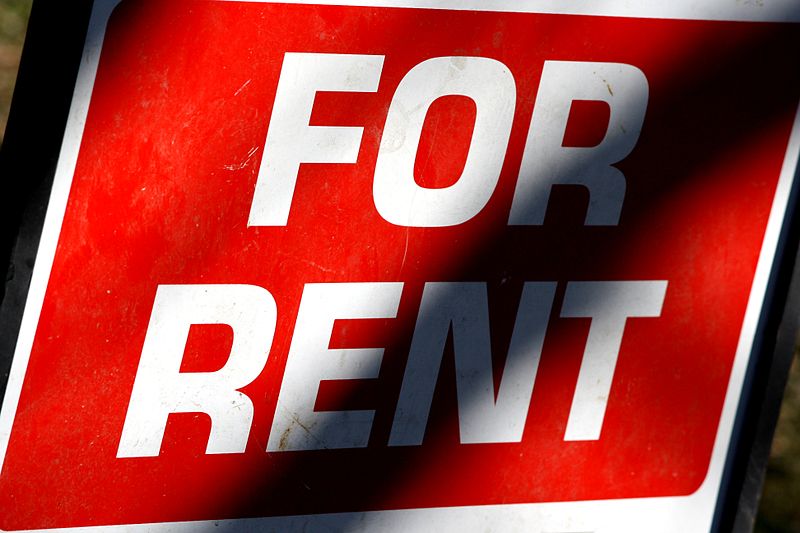The Case for No Fault Eviction Relocation Assistance
Tenants Forced to Move Face Moving Costs, Security Deposits, and First and Last Months’ Rent

Throughout the course of my life, housing insecurity as a renter has always been a real, creeping fear. As a kid growing up in Santa Barbara and Ventura counties, it was all too common to come home from school with the lights shut off or for there to be no gas to cook a dinner. As a City College student, I experienced a mass eviction from Ivy Apartments on the lower Westside. In my last year of putting myself through college, I spent the majority of my fall quarter homeless, sleeping in cars and staying on friends’ couches all the while working 25 hours a week and taking a 20-credit courseload of upper division political science classes. It shouldn’t take the threat of homelessness to make one realize housing is a human right. That is why we need our local government to utilize the full scope of its power and expand relocation assistance for no-fault evictions.
Secure and stable rental housing has always been an uphill trudge for a vast segment of Santa Barbarans. As COVID-19 sends shocks through all segments of the economy, the immediate tremors and impact have been felt by those at the bottom. This is why we need our elected officials to act boldly and live up to the progressive values they ran on by expanding rental relocation assistance for no-fault evictions. If passed, the current rental assistance proposal would place Santa Barbara as one of the weakest local eviction laws in the State. The proposed assistance program only covers two times the average rental cost in Santa Barbara. Not only is this wholly inadequate to the cost of moving, temporary housing, and paying first and last months’ rent alongside a security deposit, but the proposed protection fails to live up to council members’ claims of being progressive politicians.
Some would argue that there is no need to expand relocation assistance services in Santa Barbara due to the previously established California AB 1482. However, the law still allows families to be evicted for no fault of their own if a landlord wants to renovate the building or replace a tenant with their own family member. If a landlord decides to evict renters for these reasons, there must be adequate and corresponding protections. Current tenants need protection ensuring them funds to pay for expensive temporary housing in addition to moving costs, security deposits and first and last month’s rent.
Added up, uprooting your home and family into a new rental can easily cost thousands of dollars. Additionally, these generalized scenarios don’t even account for the most precarious and marginalized segments of the renting population. In a town with woefully lacking housing stock, imagine the additional pressure of monolingual, Spanish-speaking households navigating an overwhelmingly English-speaking industry. Further, what if a renter has accessibility needs and requires a first floor apartment with a wheelchair ramp? To add salt to the wound, picture the impact this will have on families, particularly children. In the age of COVID-19, where children do not receive the benefit of in-person education, the impact of displacement to a new part of the county, starting a new school and not knowing anyone on a six-hour zoom school day. What is already a condensed and competitive rental market becomes woefully inaccessible to a significant segment of our community.
If we choose to put in place tenant protections in line with successful policies in cities across the state, we could follow our own successful local example by requiring four months’ median rent (five for particularly impacted populations) for all no-fault evictions. This has proven effective in many communities including our own, where in 2006 Santa Barbara required relocation assistance for condo conversions at four to five times the average rent. This level of relocation assistance is not outlandish since it only keeps pace with similar cities across the state. It has been 14 years since this relocation assistance program passed, and landlords seem to be doing just fine.
To respond to the landlord lobby that cries out in horror of expanded relocation assistance requirements, it should be noted how rarely landlords pursue no-fault evictions. The only two scenarios where this relocation assistance is actually needed is if a landlord plans on remodeling a property. In this case, the relocation assistance is just a part of the price of property investments. The second reason is if a landlord needs to use the property to house a family member. In most cases, this means that the cost of rental relocation is tiny in comparison to the free or reduced rent that family members would be paying to their relatives.
It is not a radical position in stating we should care for the larger community. If not now during COVID-19, when will we ever put differences aside for the care and well being of our community and recognize housing as a human right?
Please contact the elected officials at SBCityCouncil@SantaBarbaraCA.gov by November 10 and demand an increase of no-fault eviction relocation assistance to match other cities and have officials live up to progressive values.
Gavin Spencer is a working member of the Santa Barbara Tenants Union.



